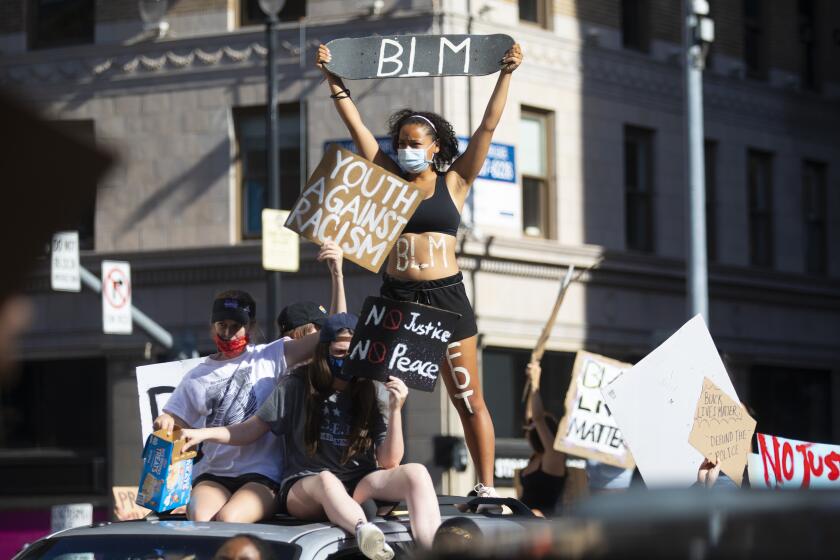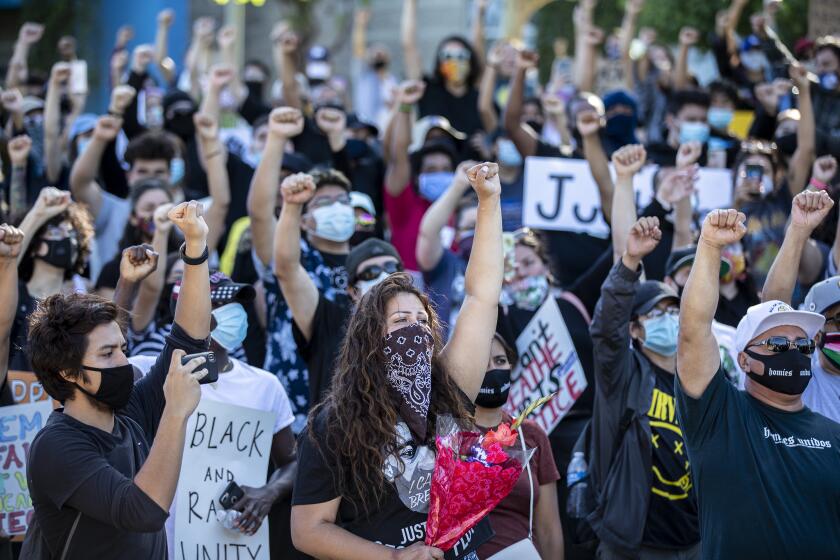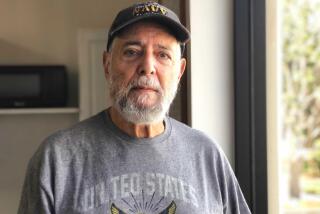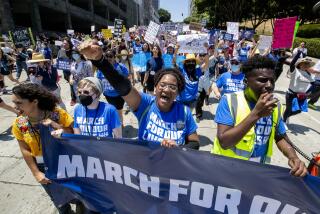In Orange County, seniors risk COVID-19 to protest death of George Floyd
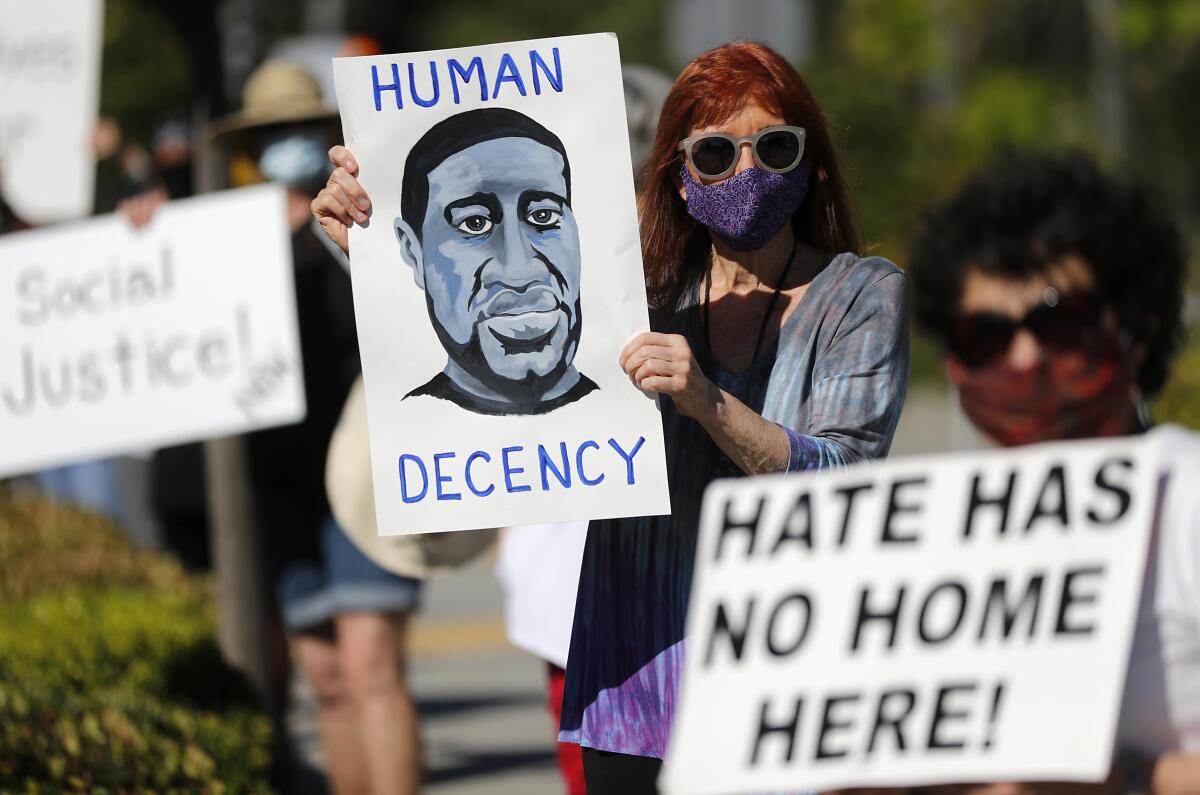
- Share via
The protesters stood in front of City Hall, next to an Olive Garden. They held signs that declared “Hate Has No Home Here” and “White Silence Equals White Consent.” Drivers honked in support.
It seemed like any other Black Lives Matter rally in small-town America.
But this was Laguna Woods.
Where the average age of residents is about 78.
Where the Black population is 0.4%.
Where standing together among dozens of people, even at a distance, could mean contracting a virus that’s particularly deadly to the elderly and infirm.
Large gatherings bring a risk of coronavirus. But health experts are supporting protests being held in response to the death of George Floyd.
“It’s hard to be out here for a lot of us,” 71-year-old Linda Nearing said on a recent afternoon. “A lot of us are hesitant to go out right now. We’ve all been so good in staying home. But we all felt to show our support for this cause was essential.”
In one of the few confrontations at the protest, someone yelled, “All lives matter,” which drew a scoff from 76-year-old Rosemary De Monte.
“These people say that,” she said, “but when it comes to wearing masks, [they think] we can all drop dead.”
The city of about 16,000 has one of the lowest novel coronavirus infection rates among Orange County’s 34 cities — its total of 13 cases averages out to just 7.9 per 10,000 residents. Still, Laguna Woods residents remain particularly vulnerable to its ravages. In Orange County, people older than 55 represent a third of all COVID-19 cases but 88% of its deaths.
So when Nearing, the president of the Laguna Woods Democratic Club, quietly announced plans for a protest on Friday, she didn’t know what to expect.
Protests around the country following George Floyd’s death at the hands of Minneapolis police have drawn diverse crowds but have often skewed young. So what would happen in a city where most of the land is occupied by a retirement community once known as Leisure World?
In Laguna Woods, the call of social justice proved strong.
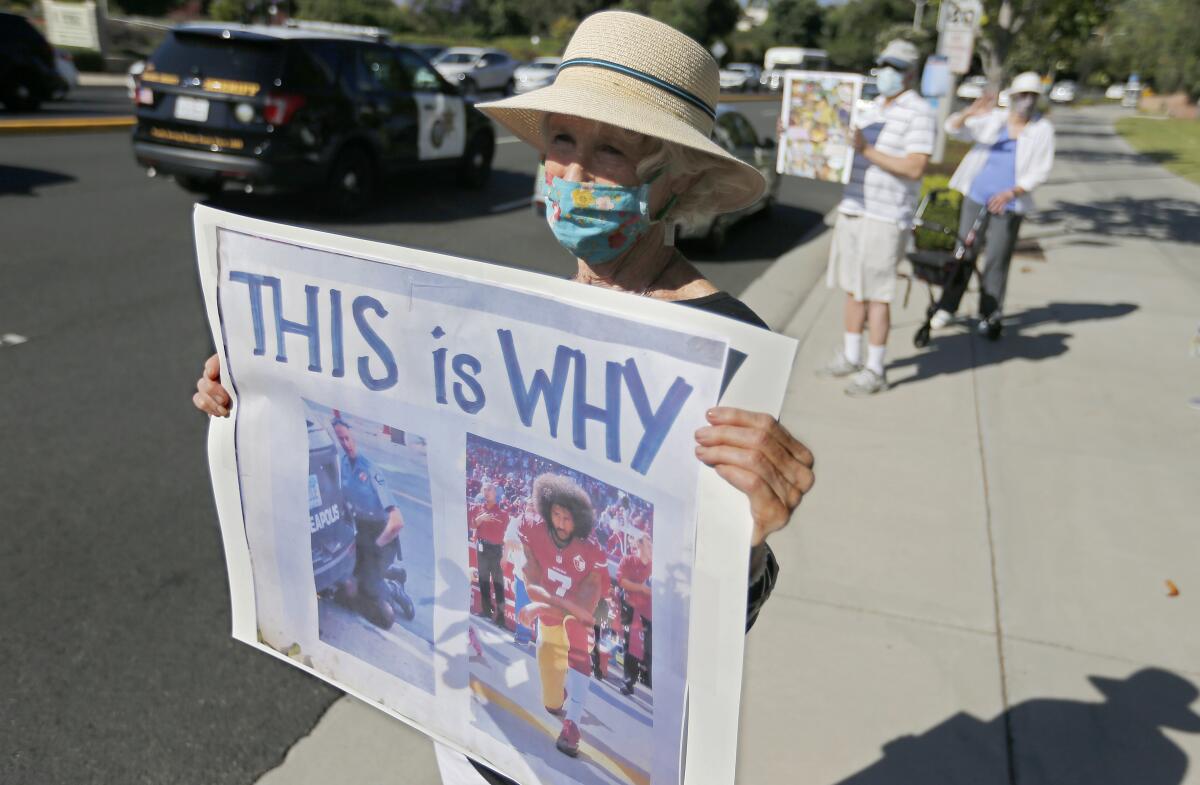
The younger ones were baby boomers who marched for civil rights and against the Vietnam War in the 1960s and who joined the throngs at the annual Women’s March of recent years. The more august attendees proudly called themselves “red diaper babies,” in honor of their Communist parents who agitated against the status quo during the Great Depression.
And they all now lived in Orange County, the only metro area in the United States with a population of over 3 million people and a Black population of less than 5% (the county’s total: 2.1%).
Most arrived in cars, but a few walked to the rally site from their nearby apartments and homes — a chance to sneak in another type of exercise along with the 1st Amendment.
To the protesters, the thought of staying safely in lockdown while demonstrations shook the country grated against their core beliefs.
Laguna Woods Mayor Pro Tem Shari L. Horne admitted she had been too scared of the coronavirus to join the dozens of Black Lives Matter protests that had sprouted across Orange County after Floyd’s death on May 25.
“I couldn’t remain silent, though” said the 68-year-old Horne, her voice muffled by a blue mask that featured the slogan “OC Vector” and an illustration of a mosquito. “My generation has been marching our whole lives for change.
“And look,” she said. “I’m just tickled pink at the turnout.”
‘Our grandchildren are marching in Seattle. It makes me proud to see people pick up the gauntlet from people our age. But we had to make a stand here as well.’
— Neil Perlman, 74
There were retirees with wheelchairs and walkers spread along the sidewalk. Sun hats and loose clothing was the most common fashion choice, not bandannas and revolution-leaning T-shirts.
Joe Rego, 71, grew up in Goa, India, and remembered being inspired as a child by footage of the Rev. Martin Luther King Jr. during the March on Washington.
“This is similar to the movement I saw 15,000 kilometers away so long ago,” he said while holding on to a poster with a picture of former NFL quarterback Colin Kaepernick kneeling. “And I want to be part of that.”
Neil Perlman went with his wife. The 74-year-old remembered attending a civil rights march as an 11-year-old, and mentioned that his sister was a Freedom Rider. He had left his home during the last three months only to go grocery shopping.
“Our grandchildren are marching in Seattle,” Perlman said. “It makes me proud to see people pick up the gauntlet from people our age. But we had to make a stand here as well.”
Laguna Woods residents have lived under virtual lockdown since mid-March, with public gates shut to limit access to outsiders. The many social clubs around town suspended gatherings indefinitely. Fear that the coronavirus would spread around the city was real.
Then in early April, Orange County officials announced they wanted to house homeless individuals stricken with COVID-19 at an Ayres Hotel within city limits.
Dozens of protesters rallied in front of the hotel, a move that drew nationwide coverage and led to Orange County rescinding its plans. The controversy split the Democratic Club board, which didn’t go through on a motion to oppose the protest. The impasse “just killed my soul,” Nearing said.
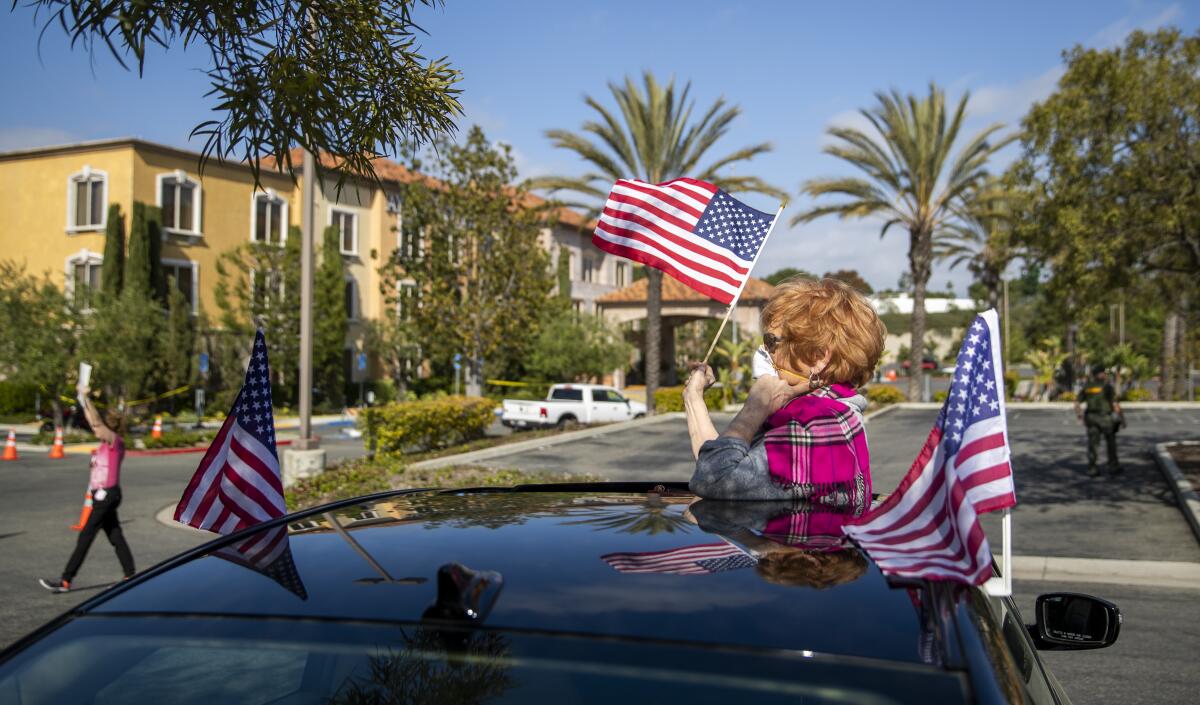
Democrats relegated their monthly meetings to Zoom sessions. As weeks of quarantine turned to months, the activist wing of the group — a lively bunch that maintains a constant presence at South Orange County liberal gatherings — could only “plan for whenever things might get calmer,” Nearing said.
Then the killing of Floyd happened.
The club placed an ad in the local weekly that blasted “white privilege” and listed the names of 30 Black men and women who have died due to police brutality. It urged members to call the Minneapolis district attorney’s office, and also sent them links to Black-run organizations that needed funds.
But board members yearned to do more.
“Every time I saw [marches] on TV, it was really tugging at me to go,” said activism vice chair Bethany Gilboard, 66. “But I wanted to protect my health. And a lot of people said the same thing.”
She suggested a “virtual protest” — a one-and-a-half-minute video composed of photos of Democrats who were sheltering in place while flashing signs supporting marchers.
Health officials want you to get tested for the coronavirus if you’ve been to a protest or any large gathering where people haven’t worn masks.
The director, 60-year-old Vivian Frerichs of Mission Viejo, had previously produced a similar compilation to thank healthcare workers. That received only 10 submissions; for the Black Lives Matter project, Frerichs stopped at 60.
“What really touches me is how engaged people are to this issue,” she said. “Even if they’re not going to be here to enjoy the changes that may come, they really care about the next generation.”
But the video wasn’t enough for some. This demanded a public protest. But how to do it safely?
“We’ve been going nowhere,” said first vice chair Sue Dearing, 69. “So people wanted to go out. But we needed to be safe too. This was a big deal for us.”
They didn’t invite other Laguna Woods clubs or outsiders to keep the numbers down. There would be no chanting to lessen the chance that a contagious droplet might spread. Masks and social distancing would be mandatory.
The public effort was especially important for Dottie Hopkins and Sandra Ward, both among a handful of Black Americans at the protest.
“We have been screaming for years [about anti-Black police brutality] with no difference,” said Ward, 73. “Now, [Laguna Woods residents] are beginning to understand.”
“They’ve had discussions like this before and nothing happened,” added Hopkins, 76. “This one feels different.”
Nearing said she and her friends “are used to middle fingers” whenever they protest in the city, but little of that venom was on display this time around. In the most negative incident of the day, a white man in a golf cart gunned past the crowd at about 15 mph with his thumb down and nearly clipped someone; protesters hissed him away.
Rosemary De Monte’s husband stayed home because of his preexisting health conditions, but she showed up to the Black Lives Matter rally as a way of giving back. “Our generation promised all these things to the world,” she said, “and what did we give them?”
A Hyundai Elantra inched past her. A teenage boy screamed and banged the roof in support, drawing cheers from the crowd. When he wouldn’t stop, De Monte smiled.
“Hey,” she yelled. “Can you give us some of that energy?”
More to Read
Sign up for Essential California
The most important California stories and recommendations in your inbox every morning.
You may occasionally receive promotional content from the Los Angeles Times.
